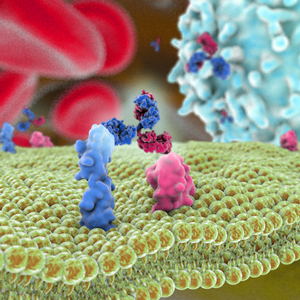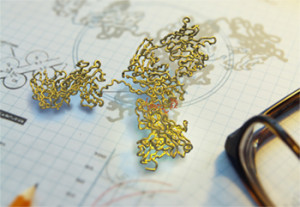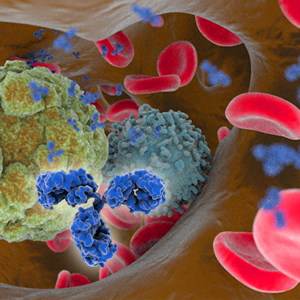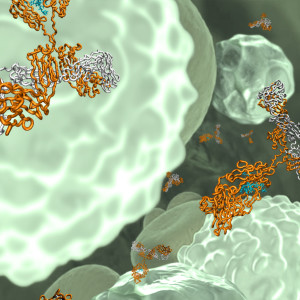 The Antibody Society is pleased and proud to be affiliated with mAbs, a multi-disciplinary journal dedicated to advancing the art and science of antibody research and development. We hope you enjoy these summaries based on the abstracts of the most read papers published in a recent issue. All the articles are open access; PDFs can be downloaded by following the links below.
The Antibody Society is pleased and proud to be affiliated with mAbs, a multi-disciplinary journal dedicated to advancing the art and science of antibody research and development. We hope you enjoy these summaries based on the abstracts of the most read papers published in a recent issue. All the articles are open access; PDFs can be downloaded by following the links below.
Issue 10.8 (November/December 2018)
Rapid, automated characterization of disulfide bond scrambling and IgG2 isoform determination. In this new report, Resemann et al. discuss a rapid LC-MALDI-TOF/TOF workflow that can both identify the IgG2 disulfide linkages and provide a semi-quantitative assessment of the distribution of the disulfide isoforms. They established signature disulfide-bonded IgG2 hinge peptides that correspond to the A, A/B, and B disulfide isoforms, and can be applied to the fast classification of IgG2 isoforms in heterogeneous mixtures.
Charge variant native mass spectrometry benefits mass precision and dynamic range of monoclonal antibody intact mass analysis. Bailey et al. describe charge variant native mass spectrometry (CVMS), an integrated native ion exchange mass spectrometry-based charge variant analytical approach that delivers detailed molecular information in a single, semi-automated analysis. They used pure volatile salt mobile phases over a pH gradient that effectively separated variants based on minimal differences in isoelectric point. Characterization of variants such as deamidation, which are traditionally unattainable by intact mass due to their minimal molecular weight differences, were measured unambiguously by mass and retention time to allow confident MS1 identification. The authors demonstrated that efficient chromatographic separation allows introduction of the purified forms of the charge variant isoforms into the Orbitrap mass spectrometer. Based on their results, they conclude that the CVMS method allows confident assignment of intact monoclonal antibody isoforms of similar mass and relative abundance measurements across three orders of magnitude dynamic range.
A systematic approach for analysis and characterization of mispairing in bispecific antibodies with asymmetric architecture. In this new report, Wang et al. discuss a systematic approach for analysis and characterization of mispairing in asymmetric bispecific antibodies. This approach consists of three orthogonal components, the first of which is a liquid chromatography (LC)-mass spectrometry (MS)–based method to measure the mass of intact antibodies. This method is used for fast analysis of mispairing and requires minimal method development, which makes it an ideal choice for early-stage development. The second component is a hydrophobic interaction chromatography (HIC)–based mispairing method that is suitable for lot release testing. The HIC method is robust and quality control friendly, and offers great linearity, precision, and accuracy. The third component is a two-dimensional LC-MS method for on-line chromatographic peak identification, which not only expedites this task but also reduces the risk of undesirable modifications during conventional fraction collection. These three methods dovetail to form the foundation of a complementary toolbox for analysis and characterization of mispairing in asymmetric bispecific antibodies and provide guidance and support for process development throughout the drug development life cycle.
Characterization and analysis of scFv-IgG bispecific antibody size variants. Cao et al. report size variants that were observed for an appended scFv-IgG bispecific antibody. Structural characterization studies showed that the size variants resulted from the engineered disulfide bond on the scFv, whereby the engineered disulfide was found to be either open or unable to form an intrachain disulfide bond due to cysteinylation or glutathionylation of the cysteines. Furthermore, the scFv engineered cysteines also formed intermolecular disulfide bonds, leading to the formation of highly stable dimers and aggregates. Because both the monomer variants and dimers showed lower bioactivity, they were considered to be product-related impurities that must be monitored and controlled. To this end, the authors developed and optimized a robust, precise, and accurate high-resolution size-exclusion chromatographic method, using a statistical design-of-experiments methodology.
Like this post but not a member? Please join!




